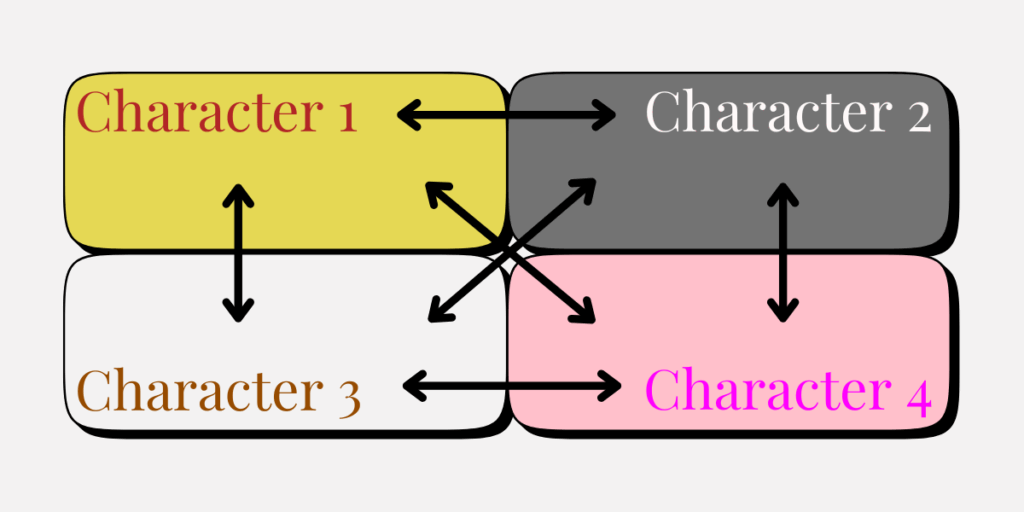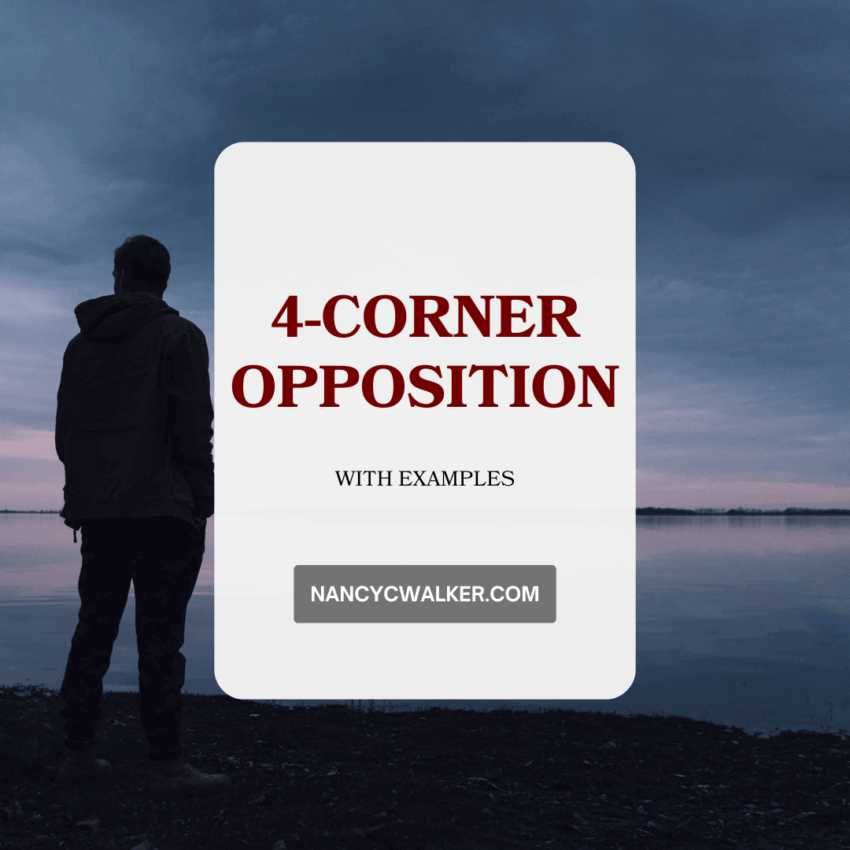This article is part of a series about character development.
As a writer, I sometimes find it hard to give my characters enough depth. A great way to tackle this is using the 4-Corner Opposition framework, which comes from author and screenwriter John Truby’s book, Anatomy of a Story. This technique helps make sure your characters are complex and engaging by determining how the characters oppose each other and cause tension. By carefully building the opposing elements, you can create a richer, more believable character journey that truly connects with your readers.

Step 1: Identify Your Hero and Main Opponent
Place your hero and their primary antagonist on the top line of your map.
Example:
- Top Left: Hero (e.g., Katniss Everdeen)
- Top Right: Main Opponent (e.g., President Snow)
Step 2: Introduce Secondary Opponents
Below your hero and main opponent, add at least two secondary opponents. These characters should also pose significant challenges to your hero.
Example:
- Bottom Left: Secondary Opponent 1 (e.g., Gale Hawthorne – a rival for Katniss’s affections, representing a different path)
- Bottom Right: Secondary Opponent 2 (e.g., Effie Trinket – initially an antagonist due to her role in the oppressive system, though her arc may change)
Step 3: Optional: Label Archetypes
If a character clearly fits an archetype, you may label them. However, do not force a label if it doesn’t naturally apply. Many characters are unique and do not conform to predefined archetypes.
Example (if applicable):
- Hero: The Rebel
- Main Opponent: The Tyrant
Step 4: Maximize Character Differentiation
Push the four major characters (hero, main opponent, and two secondary opponents) to the “corners” of your story’s conflict. This means making each character as distinct from the others as possible.
How to achieve this:
- Focus on Differing Values: The most effective way to differentiate characters is to explore how their core values clash. What do they believe in? What motivates them?
- Differing Goals: Do their goals directly oppose each other?
- Differing Methods: Do they use different strategies or tactics to achieve their goals?
Example of Value Differentiation:
- Katniss Everdeen (Hero): Values survival, freedom, and protecting her loved ones.
- President Snow (Main Opponent): Values control, order (his version of it), and maintaining power at all costs.
- Gale Hawthorne (Secondary Opponent 1): Values revolution, vengeance, and a willingness to sacrifice for a greater cause.
- Effie Trinket (Secondary Opponent 2): Initially values adherence to the rules, Capitol traditions, and personal comfort within the system.

